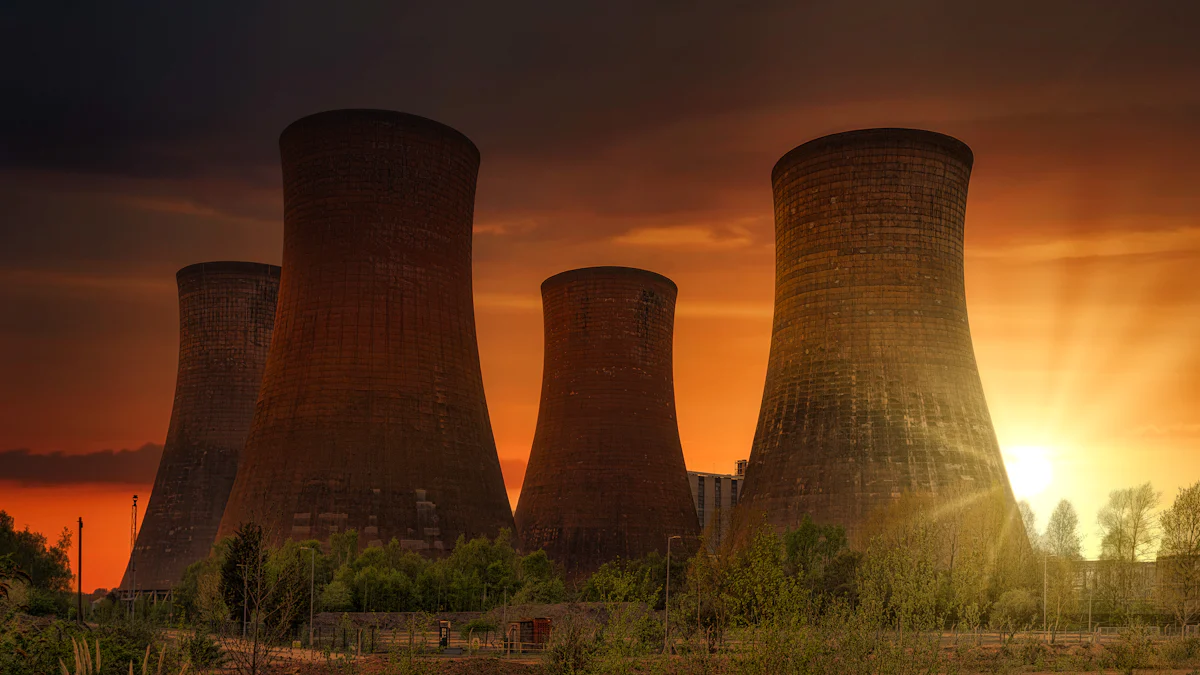The release of Fukushima’s nuclear wastewater has sparked global debate. You may have heard concerns from Japan’s fisheries and tourism industries, fearing further economic struggles as fish catches remain far below pre-disaster levels. Neighboring countries, including China, have criticized the move, calling it dangerous and unilateral. Some scientists worry about radioactive isotopes spreading across the Pacific Ocean. Despite these fears, Japan insists the release is necessary.
But could this controversial act hold unexpected benefits? Some experts suggest it might influence ocean chemistry in ways that enhance carbon storage. Could this link to ocean sequestration offer a surprising tool for climate change mitigation?
Key Takeaways
- Releasing Fukushima’s wastewater worries people but might help ocean plants grow.
- The ocean is important for fighting climate change. It takes in 25% of CO2 humans release yearly.
- Tiny organisms change carbon into stable forms. This helps keep carbon in the ocean longer.
- There could be benefits, but radioactive pollution might harm sea life and people.
- Being open and working together is key to making good environmental choices and gaining trust.
Ocean Sequestration: A Key to Climate Change Mitigation
What Is Ocean Sequestration?
Ocean sequestration refers to the process of capturing and storing carbon dioxide (CO2) in the ocean. This natural mechanism helps reduce the amount of CO2 in the atmosphere, playing a critical role in mitigating climate change. You might wonder how this works. The ocean absorbs CO2 from the air through physical and biological processes. Once absorbed, the carbon can remain stored for years, decades, or even centuries.
This process happens on a massive scale. Each year, the ocean absorbs about 25 percent of the CO2 released by human activities. Without this natural carbon sink, the effects of climate change would be far worse. However, the efficiency of ocean sequestration depends on factors like water temperature and ocean currents. For example, colder waters absorb CO2 more effectively than warmer ones.
Biological and Chemical Processes in Carbon Storage
The ocean uses several biological and chemical processes to store carbon. Phytoplankton, tiny marine organisms, play a key role. They use sunlight to convert CO2 into organic matter through photosynthesis. When these organisms die, they sink to the ocean floor, taking the carbon with them. This process, known as the biological pump, ensures long-term carbon storage.
Another important process involves marine snow. This term describes organic material that falls from the surface to deeper waters. Marine snow transports carbon to the ocean floor, where it can remain trapped in sediments for thousands of years. Additionally, the microbial carbon pump transforms dissolved organic carbon into forms that resist decomposition, further enhancing the ocean’s ability to store carbon.
The Ocean’s Role as a Carbon Sink
The ocean acts as one of the planet’s largest carbon sinks. It absorbs CO2 through a combination of physical and biological mechanisms. For instance, CO2 diffuses into the ocean’s surface waters, influenced by wind and temperature. Once inside, the carbon becomes part of the marine ecosystem, where it can be stored in deep ocean currents or sediments.
Different regions of the ocean vary in their ability to act as carbon sinks. Colder regions, like the Southern Ocean, are particularly effective at absorbing CO2. However, changes in wind patterns or upwelling can release stored carbon back into the atmosphere. Understanding these dynamics is crucial for improving climate change strategies.
Fukushima’s Nuclear Wastewater and Ocean Chemistry
Composition and Treatment of Nuclear Wastewater
You might wonder what exactly is in Fukushima’s nuclear wastewater. The water contains several radioactive elements, including:
- Transuranic Elements: These include plutonium and americium, which originate from spent nuclear fuel and have long half-lives.
- Fission Products: These are created during nuclear fission and include isotopes like cesium-137 and strontium-90.
- Activation Products: These form through neutron activation and include cobalt-60 and tritium.
To minimize environmental risks, the contaminated water undergoes treatment using the Advanced Liquid Processing System (ALPS). This system removes 62 radionuclides, leaving only tritium, which cannot be filtered out. After treatment, the water is diluted with seawater before being released into the ocean. This process aims to reduce the concentration of radioactive materials to levels deemed safe by international standards.
Potential Interactions with Marine Carbonate Chemistry
When treated wastewater enters the ocean, it interacts with marine carbonate chemistry. The ocean’s carbonate system plays a vital role in regulating pH and storing carbon. You might know that carbon dioxide reacts with seawater to form carbonic acid, which then dissociates into bicarbonate and carbonate ions. These ions are essential for marine organisms like corals and shellfish, which use them to build calcium carbonate shells.
The introduction of tritium and other residual elements could alter these chemical balances. For instance, changes in pH or ion concentrations might affect the ocean’s ability to absorb and store carbon dioxide. Scientists are still studying how these interactions could influence the broader process of ocean sequestration.
Hypotheses on Wastewater’s Role in Carbon Sequestration
Some researchers propose that Fukushima’s wastewater might unintentionally enhance carbon storage. One hypothesis suggests that trace elements in the water could stimulate phytoplankton growth. Phytoplankton play a critical role in ocean sequestration by absorbing carbon dioxide during photosynthesis. When they die, they sink to the ocean floor, trapping carbon for centuries.
Another idea focuses on how changes in ocean chemistry might impact the microbial carbon pump. This process transforms dissolved organic carbon into stable forms that resist decomposition. While these hypotheses are intriguing, they require further investigation to confirm their validity and assess potential risks.
Benefits and Risks of Linking Wastewater to Ocean Sequestration

Potential Benefits for Carbon Storage
You might wonder how Fukushima’s wastewater could benefit carbon storage. Some scientists believe trace elements in the treated water could stimulate phytoplankton growth. These microscopic organisms absorb carbon dioxide during photosynthesis, playing a vital role in ocean sequestration. When they die, they sink to the ocean floor, locking away carbon for centuries. This process could enhance the ocean’s natural ability to act as a carbon sink.
Another potential benefit involves the microbial carbon pump. Changes in ocean chemistry might strengthen this process, which transforms dissolved organic carbon into stable forms. These forms resist decomposition, keeping carbon stored in the ocean for longer periods. While these ideas are still hypotheses, they highlight how wastewater might unintentionally support climate change mitigation.
Environmental and Ecological Risks
The release of treated nuclear wastewater also carries significant risks. Marine life and ocean currents could spread harmful radioactive isotopes across the Pacific Ocean. This situation could have long-lasting and widespread consequences.
- Marine ecosystems might suffer severe damage, including animal mutations.
- Radiation levels in fishery products, fruits, vegetables, and even cosmetics could exceed safety limits.
- People living along the Pacific coast might face health risks due to increased radiation exposure.
These risks make the situation a trans-boundary and trans-generational issue. You should consider how these dangers could outweigh any potential benefits for carbon storage.
Political and Ethical Considerations
The decision to release nuclear wastewater raises complex political and ethical questions. You might ask whether it is fair for one country to take actions that could impact the entire Pacific region. Critics argue that Japan’s decision disregards the concerns of neighboring countries and global communities. This approach could set a precedent for handling similar issues in the future.
Ethically, you must weigh the potential benefits for climate change against the risks to marine ecosystems and human health. Balancing innovation with responsibility is crucial. Policymakers need to ensure that actions taken today do not harm future generations.
Broader Implications for Climate Change and Policy
Lessons from the Fukushima Case
The Fukushima wastewater release highlights the complexity of balancing environmental safety with practical solutions. You can see how public perception has evolved since the incident.
- A survey by the Sankei Shimbun in late 2020 revealed that 55% of people opposed the discharge of nuclear wastewater into the sea.
- Local fishermen and environmental groups strongly opposed the decision, fearing long-term ecological damage.
- Neighboring countries, like South Korea, maintained bans on seafood imports from Fukushima, reflecting regional concerns.
Despite this opposition, Japan’s government defended the release. Officials, including Prime Minister Yoshihide Suga, called it the most realistic and safe option. The International Atomic Energy Agency (IAEA) supported this stance, stating that the diluted water posed no scientifically detectable risk.
This case teaches you the importance of transparency and collaboration in environmental decisions. It also shows how scientific evidence must align with public trust to gain acceptance. Policymakers should consider these lessons when addressing global challenges like climate change.
The Future of Ocean Sequestration in Climate Strategies
Ocean sequestration offers promising solutions for reducing atmospheric carbon dioxide. You might find the microbial carbon pump (MCP) particularly fascinating. This process transforms dissolved organic carbon into stable forms that resist decomposition. Unlike physical mechanisms, the MCP relies on microbial activity at various ocean depths. Understanding this process could help you assess the ocean’s potential to mitigate climate change.
Emerging technologies could further enhance ocean sequestration.
- Microalgae cultivation mimics tree planting in the ocean. Rapidly growing microalgae absorb CO2 and could be deployed in underproductive waters.
- Seaweed sinking involves harvesting fast-growing seaweed and sinking it to the ocean floor for long-term carbon storage. Scaling this method offshore remains a challenge.
- Electrochemistry-enhanced sequestration uses renewable energy to split seawater into acid and alkaline components. This process captures CO2 and increases the ocean’s absorption capacity.
These advancements could revolutionize climate strategies. However, you must weigh their potential benefits against ecological risks and ethical concerns. By learning from cases like Fukushima, you can help shape a future where innovation and responsibility coexist.
The link between Fukushima’s nuclear wastewater and ocean sequestration presents a fascinating possibility. You’ve seen how treated wastewater might influence marine chemistry, potentially enhancing carbon storage through processes like phytoplankton growth or the microbial carbon pump. However, these ideas remain speculative. Scientists need more research to confirm these effects and fully understand the risks.
You must also consider the ethical and ecological challenges. Balancing innovation with responsibility ensures that solutions for climate change do not harm ecosystems or future generations. By staying informed, you can help advocate for thoughtful, science-driven policies.
FAQ
What is the purpose of releasing Fukushima’s nuclear wastewater?
Japan releases the treated wastewater to prevent storage tanks from overflowing. The Advanced Liquid Processing System (ALPS) removes most radioactive elements, leaving only tritium. Officials claim this process ensures safety while addressing the urgent need to manage the accumulating water.
Could nuclear wastewater really enhance carbon storage?
Some scientists hypothesize that trace elements in the wastewater might stimulate phytoplankton growth or strengthen the microbial carbon pump. These processes could enhance carbon sequestration. However, these ideas remain speculative and require further research to confirm their validity.
Is tritium harmful to marine life?
Tritium emits low-energy radiation, which poses minimal risk in diluted concentrations. However, long-term exposure or accumulation in marine organisms could have unknown effects. Scientists continue to study its impact on ecosystems to better understand potential risks.
How does ocean sequestration help combat climate change?
The ocean absorbs CO2 from the atmosphere, storing it through biological and chemical processes. Phytoplankton, marine snow, and the microbial carbon pump play key roles. This natural mechanism reduces atmospheric CO2 levels, helping mitigate global warming.
What are the ethical concerns surrounding this issue?
You might question whether it’s fair for one country to release wastewater that could affect the entire Pacific. Critics argue this decision prioritizes national interests over global concerns. Balancing innovation with responsibility is crucial to ensure actions today don’t harm future generations.
💡 Tip: Stay informed about environmental policies and advocate for science-driven solutions to ensure ethical and sustainable practices.
